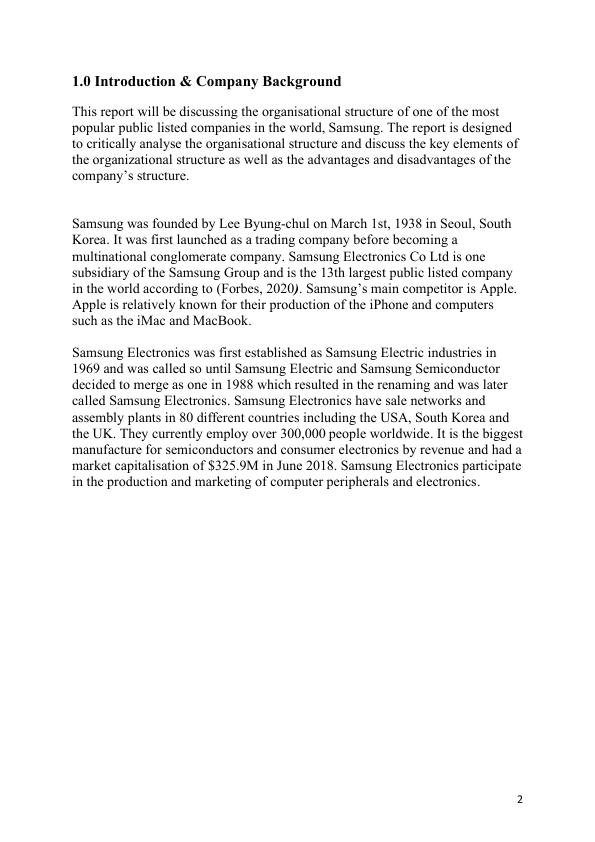organizational structure | Samsung
7 Pages1350 Words110 Views
Organisational structure (1005SSL)
Added on 2022-02-04
About This Document
This report will be discussing the organisational structure of one of the most popular public listed companies in the world, Samsung. The report is designed to critically analyse the organisational structure and discuss the key elements of the organizational structure as well as the advantages and disadvantages of the company’s structure.
organizational structure | Samsung
Organisational structure (1005SSL)
Added on 2022-02-04
ShareRelated Documents
End of preview
Want to access all the pages? Upload your documents or become a member.
A Case Study of Samsung's Smartphone
|10
|1636
|207
Case Study on Samsung PDF
|16
|4740
|437
Entrepreneurship and Intrapreneurship - A Case Study of Samsung
|8
|2070
|308
Factors that influence Samsung’s structure and design
|10
|2965
|70
(PDF) Ethics: Essence for sustainability
|7
|1835
|66
Market Analysis of Samsung with Market Structure
|13
|3633
|38



